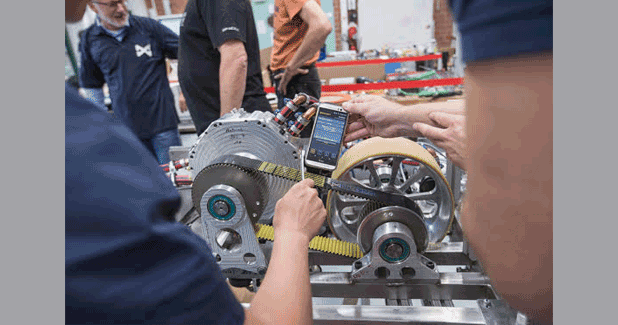
Hyperloop tech as logistics solution of the future
Technology company Continental is actively promoting the future of logistics and is involved in Hyperloop development.
Technology company Continental is actively promoting the future of logistics and is involved in Hyperloop development. Most recently, the Group supported the research work of some talented young people. For the “HyperPodX†project, students of the cooperative Engineering Physics course at the Emden/Leer University of Applied Sciences and the University of Oldenburg have developed a Hyperloop as part of a competition organised by US company SpaceX. The drive is provided by a high-performance belt from Continental.
“The future of mobility is in rail transport. Safe, reliable and, above all, fast transport will be essential for the logistics of the future. The existing infrastructure will hardly be able to cover the rising flows of goods. The industry needs new, efficient alternatives,†explained Hans-Jürgen Duensing, member of the Continental Executive Board. “We therefore see a promising future for technology in new rail transport solutions such as the Hyperloop, and are passing on our expertise built up over more than 90 years in industry to the engineers of tomorrow.â€
The Hyperloop system would allow for the transport of people and goods at speeds of more than 1,000 km/h – similar to those achieved by aircraft. The advantage over air transport is that the Hyperloop is much more environmentally friendly and could be used as a subway. The technological concept is based on the principle of reducing the usual resistance of regular trains in tunnel-like tubes so that the vehicles can achieve much higher speeds. Aerodynamic resistance, in particular, is reduced to almost zero. The air pressure in the tubes corresponds to only one per cent of the usual atmospheric air pressure. In addition, the Hyperloop comes without wheels, which means that they are not there to cause friction. Instead, the capsule-shaped vehicles use magnetic levitation technology or air cushions to move.
A distance of 1,000 kilometres in an hour? For the logistics industry, the idea of using such a means of transport between the global production sites opens up many new opportunities in logistics. “It will take another three to five years before the first Hyperloop is actually used for transporting goods,†predicts Professor Walter Neu, Hyperloop expert at the Emden/Leer University of Applied Sciences. “There are currently several test tracks under construction, such as in France and the United Arab Emirates, while a route between Vienna and Prague is also being discussed.â€
CATEGORIES Industry Update




